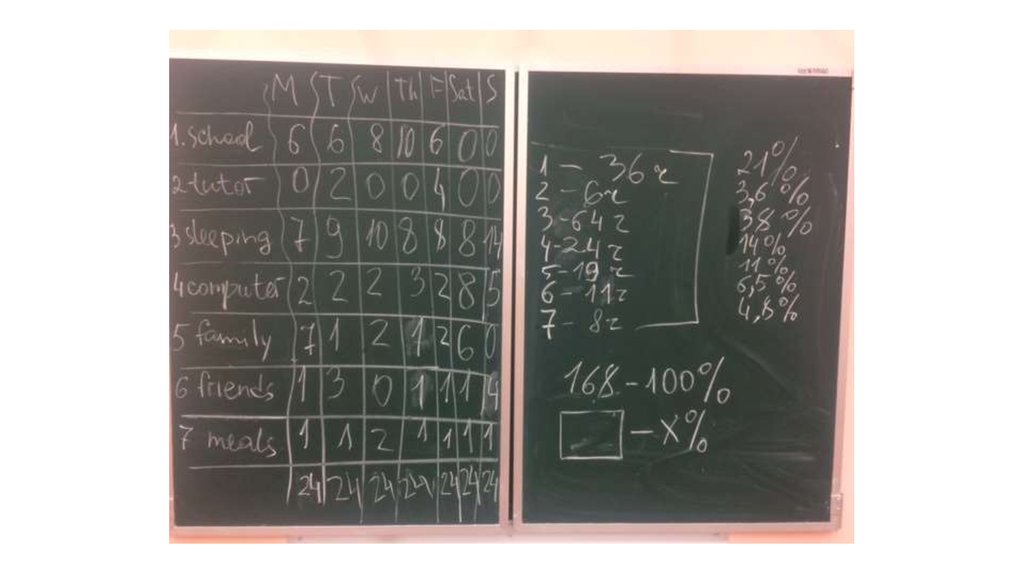Похожие презентации:
Эффективные методики преподавания иностранного языка
1. ЭФФЕКТИВНЫЕ МЕТОДИКИ ПРЕПОДАВАНИЯ ИНОСТРАННОГО ЯЗЫКА
Елена Викторовна МатвиенкоМОБУ «СОШ «ЦО Кудрово»
2.
3. Интерактивные методики
• Мозговой штурм (Brainstorming)• Виртуальная экскурсия - повышает
информативность
учебной
деятельности. Учащиеся овладевают
навыками
самостоятельного
наблюдения и анализа.
• Cognitive mapping
4. Интерактивная технология Cognitive Mapping / Когнитивное картирование
Cognitive mapping is concerned withpictorial representation of data. It has
grown out of a need to capture and
articulate mental models. These mental
models are represented in cognitive maps.
5. Cognitive Mapping
Methods of cognitive mapping:1. Contiguities of concepts, word counts
(ассоциативная связь, установление
частотности слов).
2. Sorting (сортировка карточек).
6. Cognitive Mapping
Step 1. Which figure given below do you associatewith the FAMILY? Explain why.
7. Cognitive Mapping
Step 2. Draw the figure on a paper of any colour.Step 3. Fill in the figure with words you associate with
the family.
Step 4. Present your cognitive map
8.
9.
10. Технология критического мышления
• Критическое мышление означает мышлениеоценочное, рефлексивное.
• Это открытое мышление, не принимающее
догм, развивающееся путем наложения новой
информации на жизненный личный опыт.
11. Критическое мышление (Critical Thinking)
Критическое мышление = аналитическоемышление = логическое мышление =
творческое мышление
• Технология «Плюс, минус, интересно»
• Фишбоун / «Рыбный скелет» (Fish bone)
12. Технология «Плюс, минус, интересно»
П (плюс)М (минус)
Ключевые слова
или фразы из
текста, которые
являются важными;
информация,
которая
характеризует
описываемое
явление, объект с
положительной
стороны.
Признаки
изучаемого
объекта или
явления, которые
свидетельствуют
о его
отрицательных
сторонах.
И (интересно)
Факты, которые
являются
неожиданными,
интересными.
13. «Плюс, минус, интересно»
14. ИНТЕРАКТИВНАЯ ТЕХНОЛОГИЯ «FISHBONE / РЫБНЫЙ СКЕЛЕТ »
Систематизирует материал (текст проблемногосодержания).
1. Голова – обозначение
проблемы.
2. Верхние косточки –
причины возникновения
проблемы.
3. Нижние косточки –
факты, подтверждающие наличие
сформулированных причин.
15. Проектная работа
• Time Pie (individual, group work)Purpose: to practise oral skills by talking about activities that are
meaningful to the students
16. The teacher elicits from the students the variety of activities they do during the week and the weekend, e.g. school and
1.The teacher elicits from the students the variety
of activities they do during the week and the
weekend, e.g. school and homework, tutor,
sleeping, computer, family time, friends, meals.
2. The teacher divides the class into groups of 7
students. Each student in the group gets one
day of the week.
17. The teacher elicits from the students the variety of activities they do during the week and the weekend, e.g. school and
1.The teacher elicits from the students the variety
of activities they do during the week and the
weekend, e.g. school and homework, tutor,
sleeping, computer, family time, friends, meals.
2. The teacher divides the class into groups of 7
students. Each student in the group gets one
day of the week.
18.
In the group1. Add up the hours for each activity (find the
TOTAL).
2. Divide the total hours of each activity by 168
(total hours in a week: 24*7=168)
3. Find the percentage for each activity:
168 — 100%
TOTAL- X
19.
activitiesschool,
homework
tutor
sleeping
comрuter
family time
friends
meals
hours
percentage
20. 1. Which activity do you spend the most time doing? 2. Do you like this activity? 3. Which activity do you spend the least time
Discuss with other groups the following items using
the charts
1. Which activity do you spend the most time doing?
2. Do you like this activity?
3. Which activity do you spend the least time doing?
Do you like it? Why?
4. What did you learn about how you spend your time?
5. Do you want to change anything about how you
spend your time?
21. Типы задач
Для развития коммуникативных универсальных учебныхдействий:
на учёт позиции партнёра;
на организацию и осуществление сотрудничества;
на передачу информации и отображение предметного
содержания;
тренинги коммуникативных навыков;
ролевые игры;
22. Типы задач
Для развития познавательных универсальныхучебных действий:
задачи и проекты на выстраивание стратегии
поиска решения задач;
задачи и проекты на сравнение,
оценивание;
задачи и проекты на проведение
эмпирического исследования;
задачи и проекты на проведение
теоретического исследования;
задачи на смысловое чтение.
23. Типы задач
Для развития регулятивных универсальных учебныхдействий:
на планирование;
на рефлексию;
на ориентировку в ситуации;
на прогнозирование;
на целеполагание;
на оценивание;
на принятие решения;
на самоконтроль;
на коррекцию.
























 Английский язык
Английский язык Педагогика
Педагогика








